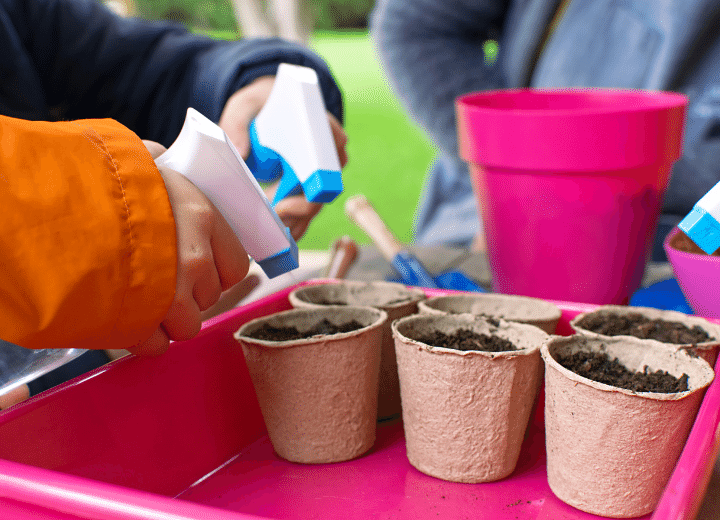Planting grass seed on hard dirt can be a challenging task, but with proper
preparation and care, you can achieve a lush and healthy lawn. Hard dirt,
also known as compacted soil, lacks the necessary air space and nutrients
for grass seed to thrive. However, by following these steps, you can
successfully grow grass on hard dirt and transform your yard into a
beautiful green space.
Step 1: Prepare the Area
The first step is to prepare the area where you want to plant the grass
seeds. Start by removing any existing debris, such as rocks, sticks, or
weeds. Use a rake to loosen the top layer of soil, breaking up any
compacted areas and ensuring better root penetration.
Step 2: Test and Amend the Soil
Test the soil pH and nutrient levels using a soil testing kit. Hard dirt
often lacks necessary nutrients for grass seed growth. Based on the test
results, you may need to amend the soil with organic matter, such as
compost or peat moss, to improve its quality and nutrient content. Mixing
in these amendments will also help break up the hard dirt and improve
drainage.
Step 3: Choose the Right Grass Seed
Selecting the right type of grass seed is crucial to ensure successful
germination on hard dirt. Look for grass seed varieties that are known to
tolerate or thrive in challenging conditions, such as drought-resistant or
high-traffic grass varieties. These types of grass can better withstand
compacted soil and harsh weather conditions.
Step 4: Add Soil Enhancers
To further enhance the soil quality, consider adding soil conditioners or
enhancers specifically designed for growing grass. These products help
break up the hard dirt and improve its texture, allowing better water and
air circulation. Follow the manufacturer’s instructions for application
rates and methods.
Step 5: Sow the Grass Seed
Now it’s time to sow the grass seed on the prepared area. Evenly spread
the seed by hand, or use a seed spreader to ensure uniform coverage. The
recommended seeding rate will depend on the specific grass seed variety
you’ve chosen, so refer to the packaging for guidance. After sowing the
seeds, gently rake them into the top layer of soil for optimal seed-to-soil
contact.
Step 6: Water Regularly
After sowing, it’s essential to keep the area consistently moist. Water
the seeded area lightly and frequently to encourage germination. Avoid
over-watering, as it can lead to waterlogging and inhibit seed growth.
Gradually reduce watering as the grass begins to establish, allowing it to
develop deep and strong root systems.
Step 7: Provide Proper Care
Once the grass starts to grow, maintain proper care to ensure its healthy
development. Regularly mow the grass, but make sure to set the mower height
at a higher level to avoid scalping the newly seeded area. Apply a
slow-release fertilizer to provide the necessary nutrients for growth, and
water deeply and infrequently to encourage deep root growth and drought
tolerance.
Step 8: Prevent Weed Growth
While the grass is establishing, it is essential to prevent weed growth
that may compete with the newly planted grass. Apply a pre-emergent weed
control product to inhibit weed seed germination. Follow the instructions
carefully and avoid applying any weed control products that may harm the
grass seedlings.
Step 9: Patience and Monitoring
Growing grass on hard dirt may take some time and patience. Monitor the
area regularly to ensure that the grass seed is germinating and growing.
Be prepared to provide additional care, such as reseeding or spot-treating
problem areas if needed. With consistent monitoring and care, your efforts
will result in a beautiful and healthy lawn over time.
Frequently Asked Questions For How To Plant Grass Seed On Hard Dirt
How Do You Plant Grass Seed On Hard Dirt?
To plant grass seed on hard dirt, prepare the area by removing debris, loosening the soil, and adding organic matter. Then, spread the grass seed evenly and water regularly.
What Is The Best Time To Plant Grass Seed On Hard Dirt?
The best time to plant grass seed on hard dirt is in early fall, when temperatures are cooler and there is more moisture in the soil.
What Type Of Grass Seed Is Best For Hard Dirt?
Tough and durable grass seed varieties, such as tall fescue or Kentucky bluegrass, are the best choices for planting on hard dirt due to their ability to withstand harsh conditions.
How Can I Improve The Soil Before Planting Grass Seed On Hard Dirt?
To improve the soil before planting grass seed on hard dirt, mix in compost or topsoil to provide better nutrition, moisture retention, and drainage for the grass seed.
Conclusion
Planting grass seed on hard dirt requires careful preparation, the right
choice of grass seed, and ongoing maintenance. By following these steps,
you can transform your compacted soil into a lush and vibrant lawn. With
patience and proper care, your once barren yard will become a thriving
green space that you can enjoy for years to come.
